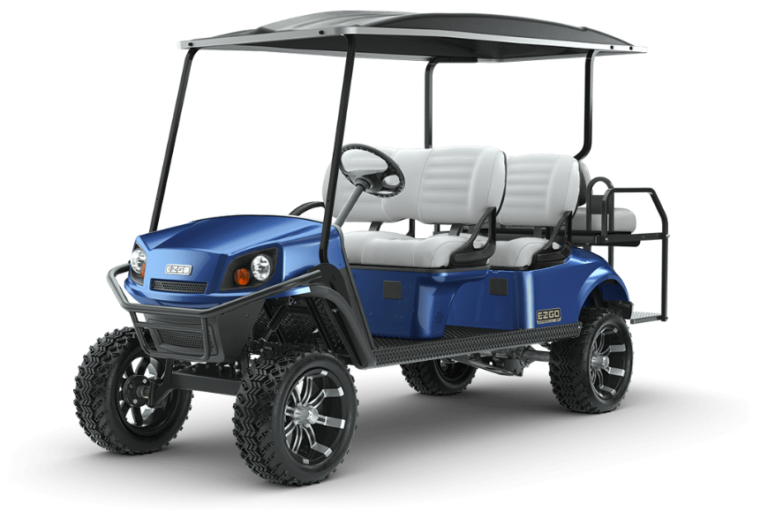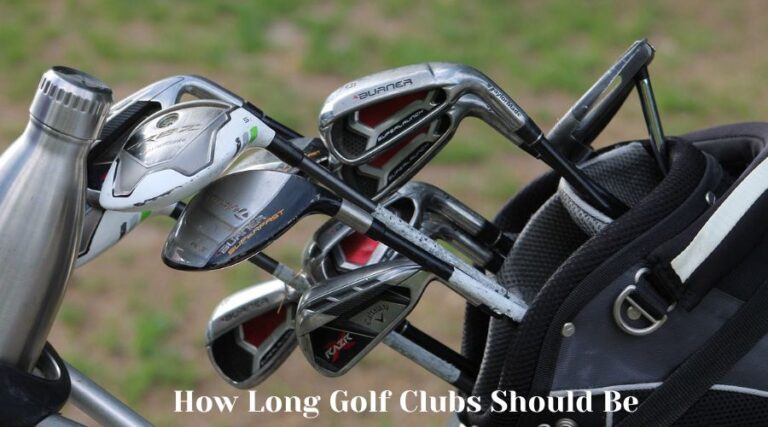A well-stocked golf bag typically includes a driver, irons, wedges, a putter, and optionally hybrids or fairway woods. Essential for any golfer, these clubs cover the range of shots encountered on the course.
Crafting the perfect golf bag setup can be a game-changer on the greens. Every golfer’s arsenal should feature a strategic selection of clubs to tackle various course challenges. The driver is indispensable for long-range tee shots, aiming to maximize distance.
Irons range from low to high lofts, offering precision for a multitude of shots. Wedges come in handy for shorter distances and specific situations like sand bunkers or getting over a hazard. The putter is the ultimate precision tool for rolling the ball into the hole. Some players opt for hybrids to replace long irons, as they can be easier to hit while providing similar distance and control. Tailoring your bag to include these clubs can make a significant difference in your performance, ensuring you’re equipped for every shot you’ll face on the course.
Contents
Teeing Off: Starting Your Game Right
Every golfer knows the thrill of teeing off on a fresh, green fairway. Starting your game right sets the tone for your round. The right clubs in your bag are your secret weapons. They can make all the difference between a good shot and a great one. Let’s talk about the two clubs you’ll reach for as you start your game.
Driver: The Powerhouse of the Tee BoxDriver: The Powerhouse Of The Tee Box
The driver is your go-to club for maximum distance. With its large head and long shaft, it’s designed to hit the ball far. When you stand on the tee box, the driver is the club that will help you cover the most ground with your first stroke. It’s vital for a powerful, solid start.
- Large sweet spot for hitting the ball.
- Longest shaft in the bag for more speed.
- Low loft angles to help the ball fly far.
Fairway Woods: Versatility On The Course
Fairway woods are not just for the tee box. They are versatile clubs used for long shots on the fairway. They can help you when the ball is in the rough, or when you need to make a safe second shot on a par 5.
| Club | Use |
|---|---|
| 3-Wood | Long shots off the tee, alternative to the driver |
| 5-Wood | High, soft-landing shots from the fairway or rough |
Choosing the right fairway wood depends on the distance you need to cover and the specific situation you find yourself in on the course. Their shorter shafts give you more control than a driver, so they can be easier to hit for some players.
Approaching The Green
Approaching the green requires clubs that offer control and precision. The right selection can mean the difference between a birdie and a bogey. With a well-stocked bag, golfers can tackle various distances and lies on the course. Let’s explore the key clubs that provide accuracy as you approach the green.
Irons: Precision For Mid-range Shots
Irons are essential for mid-range distances. They offer a blend of distance and accuracy. When the green is within reach, the right iron can help you land the ball close to the pin.
- 6-Iron: Ideal for longer approach shots.
- 7-Iron: Perfect for moderate distances.
- 8-Iron: Great for shorter approaches.
- 9-Iron: Useful for precise shots to the green.
Hybrids: The Modern Choice For Tough Lies
Hybrids combine the best features of woods and irons. They are versatile clubs that can help you escape challenging lies and still reach the green.
| Club | Use |
|---|---|
| 3-Hybrid | Replaces long irons for better playability. |
| 4-Hybrid | Offers forgiveness from difficult lies. |
| 5-Hybrid | Good for shots where a high launch is needed. |
Choose the right club based on the distance, wind, and lie. Confidence in your club choice is key to a successful approach.
Short Game Essentials
The short game in golf is where matches are won or lost. It demands precision and the right equipment. A golfer’s bag should have specific clubs for this critical part of the game. Let’s dive into the essentials for the short game and understand the importance of each club.
Wedges: Your Best Friends In The Sand
Wedges are the go-to clubs for short distances. They help you escape tricky spots like sand bunkers. Here are the wedges you need:
- Pitching Wedge (PW): Ideal for 100-125 yard shots.
- Gap Wedge (GW): Fills the gap between PW and SW.
- Sand Wedge (SW): Perfect for bunker shots.
- Lob Wedge (LW): High loft for steep angles.
Specialty Wedges: Expanding Your Options
For shots requiring extra finesse, specialty wedges come into play. They can help you overcome specific challenges on the course. Consider these additions:
| Type of Wedge | Use |
|---|---|
| High-Bounce Wedge | Works best on soft surfaces like wet sand. |
| Low-Bounce Wedge | Great for hard surfaces and tight lies. |
Each wedge serves a unique purpose. Golfers should choose their wedges based on the courses they play most often and their playing style.
Mastering The Greens
Mastering the greens is crucial in golf, requiring precision and the right tools.
Putter: The Key To A Strong Finish
The putter is your final playmaker on the greens. A good finish depends on its design and your skill.
- Length: Matches your height and stance.
- Head design: Influences ball control and direction.
- Grip thickness: Impacts your handling and comfort.
Putter Types: Finding Your Match
Choosing the right putter type enhances your game. Let’s explore the common types:
| Type | Features | Best for |
|---|---|---|
| Blade | Slim, flat profile | Fast greens |
| Mallet | Large head, more weight | Stability in strokes |
| Peripheral-weighted | Weight distributed around edges | Forgiving on mis-hits |
Test different putters to find what feels right. Your choice can transform your finish.
Customizing Your Bag
Every golfer’s game is unique, and so should be their golf bag. Choosing the right clubs for your bag is more than just picking the best brands; it’s about creating a set that complements your game and helps you handle every shot on the course. Let’s explore how to tailor your club selection to your playing style and skill level.
Gap Analysis: Filling In The Distances
To ensure consistent performance, it’s crucial to carry clubs that cover all distance gaps. This means having a selection that allows you to hit the ball the right distance, no matter where you are on the course.
- Drivers for long distances off the tee.
- Woods to cover fairway shots.
- Irons for precision and control.
- Wedges for short game play.
- Putters for the green.
Be sure to test different clubs and notice the distances you achieve with each. Record these numbers to identify any gaps that might exist between the reach of your clubs.
Club Selection By Skill Level
Your skill level should guide your club choices. Beginners, intermediates, and advanced players will benefit from different sets of clubs.
| Skill Level | Club Types | Notes |
|---|---|---|
| Beginner | Higher-lofted woods, hybrids, fewer irons | Easier to hit and more forgiving |
| Intermediate | Mix of irons and woods, specialty wedges | Focus on control and versatility |
| Advanced | Lower-lofted woods, full set of irons, multiple wedges | Precision and customization for all shot types |
Beginners should aim for clubs that offer maximum forgiveness. Intermediates can start to specialize their bags for different shots. Advanced players will want a comprehensive set for all situations.
Every golfer needs to understand the rules about golf clubs in their bag. These rules help keep the game fair and challenging. Let’s dive into the details of the 14-club rule and what it means for you on the course.
Club Limit: Understanding The 14-club Rule
According to the official rules of golf, a player is allowed to carry up to 14 clubs in their bag. This number includes all types of clubs. You must choose wisely to cover all aspects of the game. Your selection can include:
- Drivers for long distances off the tee
- Irons for various shots from the fairway
- Wedges for short game precision
- Putters for the green
- Hybrids as versatile options
Select clubs that fit your playing style and the courses you play most often. You can’t change your selection mid-round, so choose with care!
Penalties And Exceptions
If you carry more than 14 clubs, you face penalties. In a stroke play, you get a two-stroke penalty for each hole played with the extra club(s), with a maximum of four strokes per round. In match play, you lose the hole being played when the breach is discovered. If you start a hole with too many clubs, you can’t use the excess club(s) for the rest of that hole.
There are exceptions to these rules. For instance, if you accidentally have an extra club that belongs to someone else, or if a club is broken during normal play. In these cases, you won’t be penalized if you follow the correct procedure, which includes declaring the club out of play.
Maintenance And Care
Maintaining your golf clubs is as crucial as having the right clubs. Proper care ensures they perform well and last longer. Follow these easy steps to keep your clubs in top shape!
Cleaning Your Clubs
Clean clubs hit better and last longer. Dirt and grass can change how the club hits the ball. Here’s how to keep them clean:
- Use warm water and mild soap.
- Scrub the club heads with a soft brush.
- Wipe shafts with a damp cloth.
- Dry all parts before putting them away.
Remember to clean your grips too. Use only a small amount of soap to avoid slip-ups.
Regular Check-ups And Adjustments
Regular check-ups keep your clubs in their best condition. Golf clubs can wear out or become misaligned. Check these often:
| Part | Check for | Frequency |
|---|---|---|
| Grips | Wear and tear | Every 6 months |
| Shafts | Bends or nicks | Annually |
| Club heads | Loose parts | After every game |
Get a professional to adjust your clubs for the best results. They can fix loft and lie angles to suit your style.
Additional Gear For Your Bag
Perfecting your swing and choosing the right clubs are crucial, but additional gear can elevate your game. Equip your bag with these essentials to stay prepared and focused on the course.
Golf Balls And Tees
Never underestimate the importance of having extra golf balls and tees. Here’s a quick list of what to pack:
- High-quality golf balls for consistent performance
- Durable tees of varying lengths to suit your driving needs
Pro tip: Keep a mix of ball types to match different shots and conditions.
Accessories: Gloves, Towels, And More
Accessories can make a big difference in your comfort and play. Consider these essentials:
| Accessory | Use |
|---|---|
| Gloves | Improve grip and protect hands |
| Towels | Clean clubs and balls; dry hands |
| Rangefinder | Measure distances accurately |
| Umbrella | Protection from rain or sun |
| Ball marker | Mark ball position on greens |
Remember: A well-prepared bag is a secret weapon on the golf course.
Frequently Asked Questions
Are 3 Hybrid And 5 Wood The Same?
No, a 3 hybrid and a 5 wood are not the same; they have different lofts and clubhead designs.
What Hybrid Replaces A 3 And 4 Iron?
A hybrid club that typically replaces a 3 and 4 iron is known as a 3-4 hybrid.
Does A 4 Hybrid Go Further Than A 4 Iron?
A 4 hybrid typically hits the ball further than a 4 iron due to its design and loft.
How Should You Arrange Clubs In A Golf Bag?
Place longer clubs in the back slots of your golf bag for easy access. Organize irons in the middle, with wedges towards the front. Keep putter in a separate putter well or front slot. Ensure woods and driver are at the bag’s top for quick selection.
Conclusion
Choosing the right clubs for your golf bag can significantly enhance your game. Each club serves a unique purpose, helping you tackle various aspects of play. Remember, a balanced mix of drivers, irons, wedges, and a putter is crucial. Tailor your selection to fit your skill level and the courses you frequent.
This strategic approach will not only improve your performance but also make the game more enjoyable. Happy golfing!





